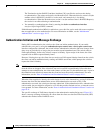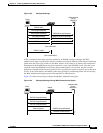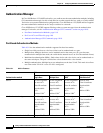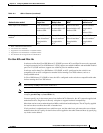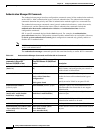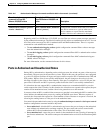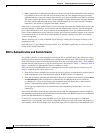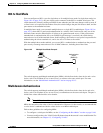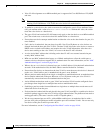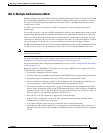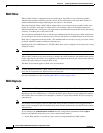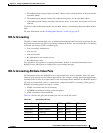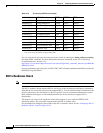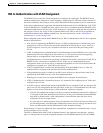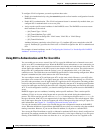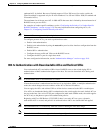
10-14
Catalyst 2960 and 2960-S Switch Software Configuration Guide
OL-8603-09
Chapter 10 Configuring IEEE 802.1x Port-Based Authentication
Understanding IEEE 802.1x Port-Based Authentication
• Voice VLAN assignment on an MDA-enabled port is supported in Cisco IOS Release 12.2(40)SE
and later.
Note If you use a dynamic VLAN to assign a voice VLAN on an MDA-enabled switch port on a switch
running Cisco IOS Release 12.2(37)SE, the voice device fails authorization.
• To authorize a voice device, the AAA server must be configured to send a Cisco Attribute-Value
(AV) pair attribute with a value of
device-traffic-class=voice. Without this value, the switch
treats the voice device as a data device.
• The guest VLAN and restricted VLAN features only apply to the data devices on an MDA-enabled
port. The switch treats a voice device that fails authorization as a data device.
• If more than one device attempts authorization on either the voice or the data domain of a port, it is
error disabled.
• Until a device is authorized, the port drops its traffic. Non-Cisco IP phones or voice devices are
allowed into both the data and voice VLANs. The data VLAN allows the voice device to contact a
DHCP server to obtain an IP address and acquire the voice VLAN information. After the voice
device starts sending on the voice VLAN, its access to the data VLAN is blocked.
• A voice device MAC address that is binding on the data VLAN is not counted towards the port
security MAC address limit.
• MDA can use MAC authentication bypass as a fallback mechanism to allow the switch port to
connect to devices that do not support 802.1x authentication. For more information, see the “MAC
Authentication Bypass” section on page 10-40.
• When a data or a voice device is detected on a port, its MAC address is blocked until authorization
succeeds. If the authorization fails, the MAC address remains blocked for 5 minutes.
• If more than five devices are detected on the data VLAN or more than one voice device is detected
on the voice VLAN while a port is unauthorized, the port is error disabled.
• When a port host mode changes from single- or multihost to multidomain mode, an authorized data
device remains authorized on the port. However, a Cisco IP phone on the port voice VLAN is
automatically removed and must be reauthenticated on that port.
• Active fallback mechanisms such as guest VLAN and restricted VLAN remain configured after a
port changes from single-host or multiple-host mode to multidomain mode.
• Switching a port host mode from multidomain to single-host or multiple-hosts mode removes all
authorized devices from the port.
• If a data domain is authorized first and placed in the guest VLAN, non-802.1x-capable voice devices
need their packets tagged on the voice VLAN to trigger authentication. The phone need not need to
send tagged traffic. (The same is true for an 802.1x-capable phone.)
• We do not recommend per-user ACLs with an MDA-enabled port. An authorized device with a
per-user ACL policy might impact traffic on both the port voice and data VLANs. You can use only
one device on the port to enforce per-user ACLs.
For more information, see the “Configuring the Host Mode” section on page 10-46.



